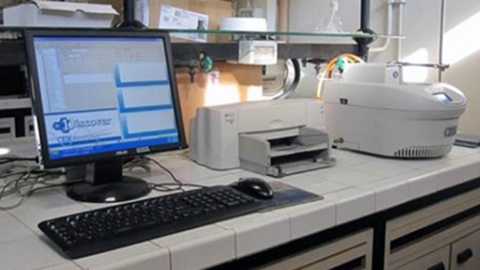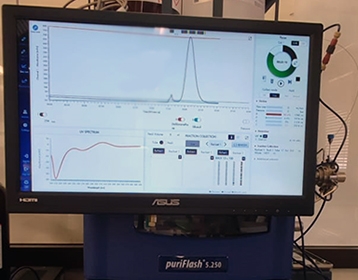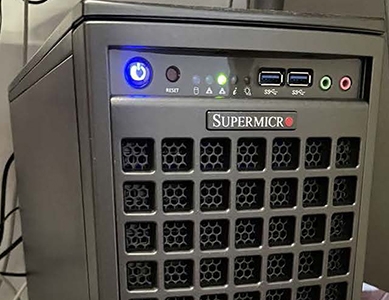Progettazione, sintesi e sviluppo di nuove entità chimiche biologicamente attive nel campo degli agenti antitumorali, antivirali e del sistema nervoso centrale. Studi di modellistica molecolare per l’analisi delle interazioni ligando/proteina.
LABORATORIO 5A Prof. SILVESTRI ROMANO- LA REGINA GIUSEPPE "Drug Design and Synthesis Center (DDSC)"

Descrizione
Tipologia
Chimico
Attività
0%
100%
0%
Responsabile
| Nome | Struttura | |
| Romano Silvestri | romano.silvestri@uniroma1.it | DIPARTIMENTO DI CHIMICA E TECNOLOGIE DEL FARMACO |
ERC scientific sector
PE5_18, LS1_13
Dipartimento o centro ospitante
Personale docente e di ricerca
KET
Health, life sciences, biotechnologies
Strumenti e attrezzature
| Nome | Descrizione | Servizi Offerti | Tipologia |
| CEM Discover SP | Reattore a microonde per la sintesi per la sintesi organica | Sintesi | Attrezzature principali per la ricerca (piccole/medie/grandi attrezzature) |
| Interchim SpotII | Sistema di cromatografia liquida a media pressione per la purificazione preparativa di composti organici | Sintesi | Attrezzature principali per la ricerca (piccole/medie/grandi attrezzature) |
| Interchim PuriFlash PF 5.250 | Sistema di cromatografia liquida a media e alta pressione per la purificazione preparativa di composti organici | Sintesi | Attrezzature principali per la ricerca (piccole/medie/grandi attrezzature) |
| ThermoFisher Scientific Dionex Ultimate 3000 | Sistema di cromatografia liquida ad alta pressione per la purificazione analitica di composti organici | Sintesi | Attrezzature principali per la ricerca (piccole/medie/grandi attrezzature) |
| Supermicro 740GP | Workstation per lo studio delle interazioni ligando/proteina | Virtual screening | Attrezzature principali per la ricerca (piccole/medie/grandi attrezzature) |
Altre Informazioni
The Silvestri Research Group - Drug Design and Synthesis Center - https://romanosilvestri.it
Our group, headed by Professor Romano Silvestri, is involved in different research areas of medicinal chemistry. We put all of our talents and efforts to meet the goals we want to achieve.
RESEARCH
Synthetic Unit
The research projects are primarily focused on the drug design and synthesis of new biologically active chemical entities in the fields of antitumor, antiviral or central nervous system drugs. The drug design is based on molecular modeling studies performed by the internal computational unit. We employ procedures for the microwave-assisted synthesis and highly automated purifications developed inside the reearch unit. We have developed reasearch projects of antiviral agents (novel classes of HIV NNRTI classes: IAS, PAS, PBTD, DAMNI), antifungal agents (analogues of bifonazole (Ph.D. thesis), ketoconazole and miconazole), antitumor agents (antimitotic agents, ellipticine and CC-1065 analogues, and agents endowed with high apoptotic activity in CML K562 cells and in cells from patients who were imatinib-resistant), antiinflammatory drugs (analogues of lonazolac, tolmetin, lefetamine and sulindac), CNS agents (antidepressant drugs: mianserine analogues and MAO inhibitors, CB1endocannabinoid receptor ligands), and synthetic studies of new heterocyclic systems.
Computational Unit
The main research focus of the computationa unit is in the application of computer-based methods to speed up the discovery of novel small molecules endowed with promising biological activity. The chemoinformatic approaches moves from classical to more advanced molecular modeling techniques. The research activity include the hit-compounds identification, mainly by virtual screening as well as the hit-to-lead process by re-branching, docking and molecular dynamics.
Pagina web



